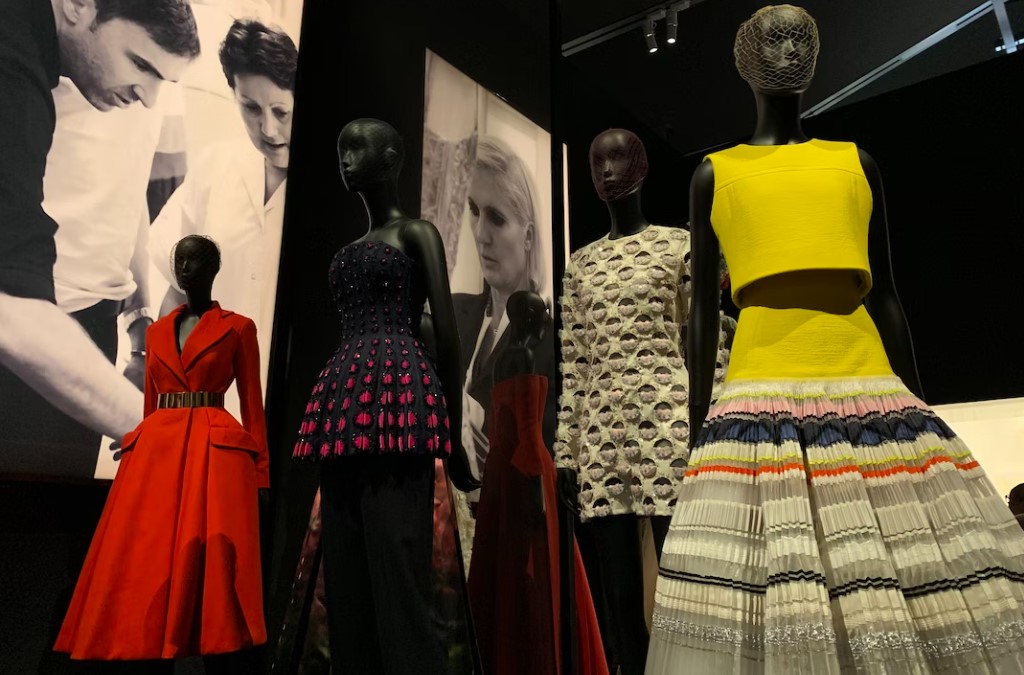21 Apr What are Works of Artistic Craftsmanship?
 Author: Ian Aldridge, Progressive Legal
Author: Ian Aldridge, Progressive Legal

Under Australian Intellectual Property law, it’s often the case that various creatives will obtain immediate and automatic protection over their copyrightable works (such as books, songs, paintings, etc.). However, if you are in an industry (such as fashion or sculpture making) where it is likely that your products may be captured by the design/copyright overlap, or if you create works of artistic craftsmanship, it may be increasingly difficult to ascertain exactly what intellectual property rights you have in a work (if any).
This article will examine:
- what is the copyright/ design overlap?;
- what is a work of artistic craftsmanship?;
- should I rely on copyright or designs to protect my work?; and
- key takeaways.
What is the copyright/ design overlap?
The copyright/ design overlap is a complex and arguably convoluted area of intellectual property law in Australia. The position is such that where a two-dimensional artistic work is embodied or transformed into a three-dimensional work, there will not be dual protection afforded. In other words, you cannot have the work concurrently protected by copyright and designs.
The justification underpinning the general position is that copyright protects artistic work. Where a creator decides to proceed down the path of industrial manufacture and mass production of a product, copyright protection is likely to be lost on the basis that the product should instead be registered as a design.
This renders it difficult for creators as they are not given a choice as to which IP regime they would like to protect their works, as the default appears to be that designs registrations are more apt in such circumstances.
An example of this is where a fashion designer’s drawing is mass produced in a garment which has the shape of the drawing (this is also known as the corresponding design). In such circumstances, the original drawing can actually be copied from the date the product is first offered for sale (i.e. a commercial quantity is sold) on the basis that copyright no longer exists in the work (that being the original drawing).
What is Corresponding Design?
Section 74 of the Copyright Act 1968 (Cth) (“Copyright Act”) defines a corresponding design as:
“in relation to an artistic work, means visual features of shape or configuration which, when embodied in a product, result in a reproduction of that work, whether or not the visual features constitute a design that is capable of being registered under the Designs Act 2003”
The basis of this idea is that artistic works which are then transformed into 2D works (as patterns or ornamentations) still receive copyright protection (think for example: flat wallpaper, calendars, book covers, CD covers etc – these will all retain copyright protection). Alternatively, products such as tapestry or knitted items will not be covered by copyright and will be regarded as ‘corresponding designs’ for the purpose of s 74.
However, this is a very grey area of law and depends on the extent to which an embellishment becomes sufficiently “three dimensional”, so as to render it a corresponding design.
The case of Polo/ Lauren Co LP v Zilani Holdings Pty Ltd [2008] FCAFC 195 illustrates this in relation to the fashion industry. Specifically, the Full Federal Court considered this issue in relation to Polo Lauren’s embroidered polo player on its shirts and found that the logo was “conceptually distinct” from the shirts. As such, the shirt did not “embody” the artistic work and as such, copyright was not lost.
What is a work of artistic craftsmanship?
The copyright/ design overlap is further complicated on the basis that where an original work is one of ‘artistic craftsmanship’ copyright will not be lost even if the corresponding design of the work is ‘industrially applied’. An artistic work is applied “industrially” if it is applied to over 50 articles (reg 12 Copyright Regulations 2017 (Cth)).
Some factors to consider when ascertaining whether a work is one of artistic craftsmanship include, inter alia;
- A work can be one of artistic craftsmanship even if that work was created by a machine, however, it may make it more difficult for a plaintiff to establish.
- Aesthetics alone are insufficient to make a work one of artistic craftsmanship. In order for a craftsman to demonstrate artistic expression in his or her work, the expression must be “unconstrained by functional considerations” (Burge v Swarbick [2007] HCA 7) (“Burge”). For example, in Burge it was held that a hand-carved boat plug was not a work of artistic craftsmanship as the primary purpose of the design related to functional speed.
The decision of State of Escape Accessories Pty Limited v Schwartz [2022] FCAFC 63 also provides an example of when a work is not one of artistic craftsmanship. In this case, the Federal Court rejected a claim for copyright infringement brought by State of Escape in relation to its neoprene tote bags.
Put simply, State of Escape argued the bag served an aesthetic function. The Court held that whilst the bag was one of craftsmanship, it was not one of artistic craftsmanship on the basis that many of the design choices were based on functional issues. For example, the sailing rope served the purpose of reinforcing and protecting the sides of the bag, as well as maintaining its overall shape.
Should I rely on copyright or designs to protect my work?
In order to ascertain whether your work is better protected under copyright or designs, there are some questions you need to consider:
- Nature of the work: what is the work you wish to protect? For example, is it an artwork, 3D item etc?; and
- Whether you have the intention of mass producing the item.
Key takeaways
If you are a creative who often designs products, it is imperative that you have a basic understanding of the copy/ design overlap and what a work of an artistic craftsmanship is. In summary,
- you cannot have a work be covered by both designs and copyright;
- if you have an artistic work which is transformed into the surface of a product, it can still be covered by copyright;
- the further the work moves into the three dimensional and mass production realm, the more likely that it will be covered by designs and copyright will be lost;
- one exception to the above is where a work is an artistic craftsmanship. In such circumstances, the work may be covered by copyright.
If you require any advice from our IP Lawyers in relation to works of artistic craftsmanship, fill our online contact form here, or contact our office at 1800 820 083.
Tailor Made Legal Documents
We can provide you with tailored Legal Documents in a number of areas including: Intellectual Property Law, Commercial Law, Privacy Law, Workplace Law, Corporate Law, and Litigation / Dispute Resolution.
Click here to request a fixed-price Legal Document and have a look at the range of different documents we can help you with.

Ian Aldridge is the Founder and Principal Lawyer Director at Progressive Legal. He has over 15 years experience in advising businesses in Australia and the UK. After practising in commercial litigation for 12 years in major Australian and International Law Firms, he decided to set up a NewLaw law firm in Australia and assist growing Australian businesses. Since then, he has advised over 2,500 small businesses over the past 6 years alone in relation to Intellectual Property Law, Commercial, Dispute Resolution, Workplace and Privacy Law. He has strived to build a law firm that takes a different approach to providing legal services. A truly client-focused law firm, Ian has built Progressive Legal that strives to deliver on predictable costs, excellent communication and care for his clients. As a legal pioneer, Ian has truly changed the way legal services are being provided in Australia, by building Legal Shield™, a legal subscription to obtain tailored legal documents and advice in a front-loaded retainer package, a world-first. He has a double degree in Law (Hons) and Economics (with a marketing major). He was admitted to the Supreme Court of NSW in 2005.






